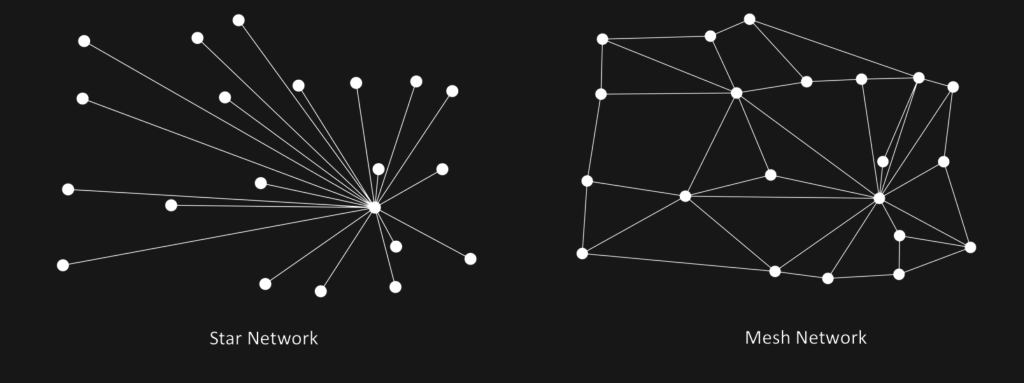by Matt Maupin, Senior Product Manager, Silicon Labs
The operational and environmental conditions found in industrial sectors such as manufacturing, distribution, and utilities (gas, electricity, water) have always presented a challenge to connectivity. Wired connections would be used where a clear and definite network existed, giving the assurance of reliability for mission-critical systems. Wireless would be used to provide more of an ad hoc point-to-point connection, especially in industrial environments where wired infrastructure is lacking or impractical. Historically it wasn’t common for the two network types to be connected, but the Internet changed all that.
While wired networks have generally conformed to industry standards, early wireless solutions often used some form of proprietary protocol. Today, the landscape has shifted; wireless networks based on recognized standards are challenging the ‘old ways’ and displacing wired network connections, and for good reason. A wireless network offers many of the benefits of a wired solution and adds a host of new possibilities, such as greater mobility, flexibility, simpler network management and lower cost of ownership. One of the most widely used wireless technologies in the industrial sector, Wireless HART, evolved from its hard-wired ancestor specifically for process automation. As demands have changed, the use of other wireless protocols has increased. The Industrial IoT (IIoT) will be made possible by wireless networks, and with so many options available it can be challenging to choose the right solution. Here, we offer some comparisons that should help simplify the decision process.
Wired or wireless?
As automation evolves, it needs to work in conjunction with a wider perspective, such as global demand, local logistics, and the overall supply chain. Managing the movement of all this data requires a network topology, and most networks today are packet-based. Within each packet is a payload (the data), normally preceded by a header (routing information) and followed by a trailer (containing useful information like error correction).
This basic format is present in both wired and wireless networks. Parameters such as latency and bandwidth are used to evaluate how well a network can deliver data, which becomes more important as industries become more automated and more distributed. For a wireless network, there are other important parameters to consider, such as range, robustness, and power consumption.
Power consumption is an important consideration in wireless IIoT networks. With wired networks, the power needed to drive the connection could actually be driven by the connection itself. However, with wireless networks, the power needs to be provided or harvested. This means power consumption is a key consideration for wireless IIoT networks. Because of this, wireless IIoT devices have to make trade-offs in areas such as output power, duty cycle, and throughput.
Range is closely related to the frequency of operation for a wireless network; those that operate in the sub-GHz range typically have greater range (for a given power) than those that operate in the 2.4 GHz range. However, wireless mesh networking can help extend the coverage of 2.4 GHz and many popular mesh technologies like Zigbee, Thread and Bluetooth Mesh. These protocols are also important to the future of the IIoT, due to the acceptance of standards and 2.4 GHz bands. For this reason, the IIoT is expected to adopt protocols operating in both 2.4 GHz and sub-GHz bands.
IP considerations
While the underlying purpose of wireless IIoT networks is the reliable delivery of data, one area has become increasingly important — IP. IP provides for greater interoperability and easier access and management of the data. Thread and 6LoWPAN use the same Internet Protocol (IP) format as the rest of the Internet, which makes it simpler to address a specific endpoint using conventional Internet technology. A network based on Zigbee, which is not IP-aware, will require a gateway to translate messages between the two domains. However, we are seeing more off the shelf gateways and hubs that bridge Zigbee to the internet, allowing easy access to devices and data contained on the Zigbee network.
Mesh technology
Many protocols today support mesh technology, including Bluetooth, Zigbee, Thread and Z-Wave (which is popular in the connected home). Mesh networking extends the range of wireless networks by allowing devices in close proximity to be part of the active path for network traffic. In effect, a packet could pass through a mesh network using any number of paths, but the one chosen will depend on the conditions. For example, two nodes may be communicating when communication between the nodes breaks down due to interference, a loss of signal or a failure on the device. Instead of causing a general breakdown in communications, the message will simply seek out another node close by and continue to function normally. This self-healing aspect of mesh networking is one of its great strengths. In the IIoT, where devices may be moved, added, cycled or removed, this ‘hands off’ approach to network management can be extremely useful.
The self-healing nature of mesh networking also provides a more robust network able to cope with harsh environments. For example, a factory that contains large metallic equipment will create multiple paths for RF signals, with large levels of attenuation. Mesh networking allows signals to find the best path through such an environment.
Long-range communication
An alternative to a mesh network is a star topology (see Figure 1) in which each node talks directly to a gateway. This is the approach taken by Low Power Wide Area Networks (LPWANs) such a LoRa and Sigfox, as well as cellular variants such as NB-IoT and LTE-M. By operating in the sub-GHz band and keeping the data bandwidth relatively low (tens of bits per message), LPWANs can achieve a range measured in the tens of kilometers. These technologies are ideal for emerging infrastructure such as smart cities and remote monitoring where the distance between nodes is significant but the data being exchanged is relatively low. However, they are less optimized for smart factories, where range is less important than bandwidth and latency.
Multiprotocol radios
The IIoT is a strong adopter of sub-GHz technologies thanks to the strengths and benefits this part of the spectrum has over 2.4 GHz in industrial environments. The popularity of proprietary protocols in the sub-GHz band is still strong, due in part to the prevalence of legacy technologies.
Just as a combination of wired and wireless technologies was once an ideal way to implement optimum connectivity, today the solution may not be to choose a single wireless technology but instead combine the strengths and benefits of two. Protocols operating in the sub-GHz band offer many benefits, but may provide limited bandwidths and must communicate to equipment with a dedicated radio. Bluetooth Low Energy offers bandwidths as high as 2Mb/s and provides a simple interface to standard equipment such as PCs, laptops, tablets, and smartphones. Choosing an integrated multiprotocol solution that supports both Bluetooth and sub-GHz connectivity (see Figure 2 example) provides a standards-based 2.4 GHz connection for man-to-machine interactions with machine-to-machine (M2M) networks in the sub-GHz frequency.

Figure 2. Multiprotocol technology simplifies Bluetooth control of devices such as smart meters on sub-GHz networks.
Companies and municipalities around the world are recognizing the benefits that wireless connectivity brings to industrial environments. The amount of data now being generated that could be used to improve processes and increase productivity is undeniable, while the requirement for factories, cities, offices, and homes to operate smarter is equally apparent. The IIoT will reach beyond sensors and actuators to provide the cloud connectivity and big data needed to realize the potential of a more connected world. Every industry will benefit from this revolution, as will every citizen.
About the author
Matt Maupin is a Senior Product Manager at Silicon Labs responsible for EFR32 Wireless Gecko products. He has more than 15 years in the semiconductor industry focusing on wireless connectivity including Wi-Fi, Bluetooth, Zigbee and proprietary solutions for both 2.4 GHz and sub-GHz bands. Mr. Maupin has been active in numerous industry groups for wireless communication including Bluetooth, Zigbee, and IEEE.



Leave a Reply
You must be logged in to post a comment.